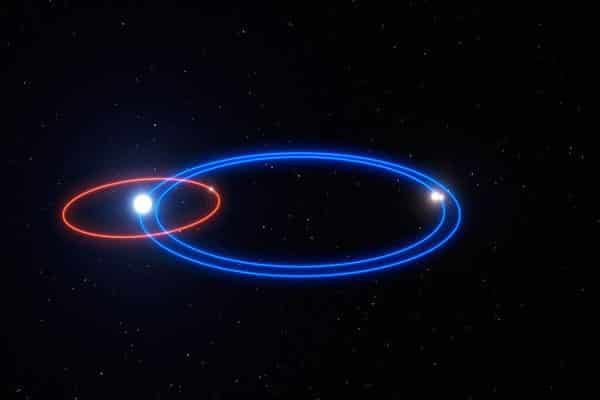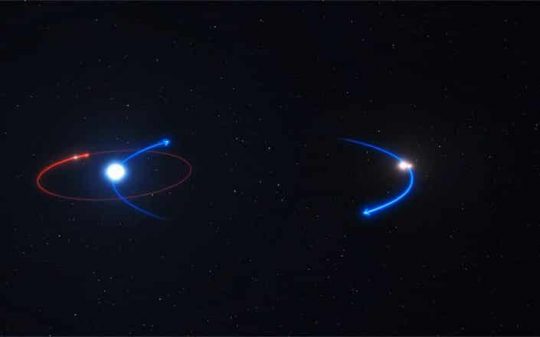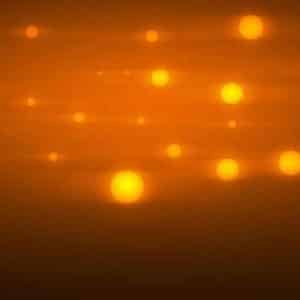A giant exoplanet orbiting three suns has just been discovered, causing controversy regarding its origins and a possible extraterrestrial implication.
Astronomers have recently discovered a star system with multiple stars. Nothing out of the ordinary, except that a watery exoplanet four times the size of Jupiter – the largest planet in our Solar system with a mass one-thousandth that of the Sun, is trapped between these three burning celestial bodies.
This peculiar stellar system was spotted by astronomers from the University of Arizona using ground-based telescopes located in the desolate Atacama Desert in Chile. At first, the team of scientists were on the lookout for planets with extreme orbits when they stumbled across this intriguing star system.
The planet – named HD 131399Ab is located 320 light-years away from Earth, near the Scorpius constellation and the luminous star Antares. It orbits around a star twice the dimension of our Sun, while also sharing the space with two other stars rapidly twisting around each other. One of the two scorching celestial bodies is the size of our Sun, with the other one measuring only half.

Photo Credit/ESO
Utilizing near-infrared spestroscopy, astronomers determined the exoplanet has a considerable amount of water and methane, making it one of the coldest planets ever detected. However, because of its searing neighbors, it is boiling at over 500 degrees Celsius (1,000 degrees Fahrenheit), a temperature that doesn’t allow water to stay in its liquid form, making its surface unlikely to host any Earth related lifeforms.
This unique planet has only recently been detected, that’s why a solid story regarding its origins has failed to appear in the study published in Science, but there are a few hypothesis and speculations.
One idea proposes that the exoplanet formed in the vicinity of the star it directly orbits, but was vacuumed by other forces, thus considerably enlarging its orbit. The other theory assumes that the star it orbits – the one twice the size of the Sun, has formed near the other twin stars, but was somehow separated from them and caught in a new orbit. But how could the ‘big bother’ get separated from its two smaller companions?
There is much we don’t understand about the cosmos, that’s why researchers are finding this troubling to explain. Because of this, a debate has sparkled inside the UFO community suggesting that the exoplanet was in fact artificially moved to its current position. An advanced species of extraterrestrials would find such a location appealing because they could harvest the energy from three suns.
The formidable proportions of this exoplanet make it a reliable candidate for supporting a considerable alien population, although the outlandish conditions on its surface would make life possible for lifeforms extremely different from those on Earth.
Other than this, the three stars seem to emit exotic forms of radiation, forming a strong electromagnetic field that would serve as a shield for HD 131399Ab, and all the lifeforms that would allegedly exist and adapt in this particular star system. Could it be that this system as a whole offers the ideal habitability conditions for an advanced species of extraterrestrials? Or has this conglomeration rather occurred as a result of a natural universal phenomenon?
Sources:









